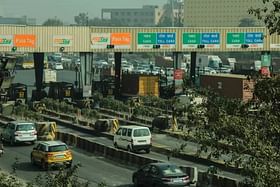The National Highway Authority of India (NHAI) is reportedly planning to bring in “pay per road use” system for toll collection on the Delhi-Gurugram Expressway, according to a report by the Hindustan Times.
With this system, the commuters would pay only for the distance they travelled and ‘fixed toll’ tax may discontinue on the expressway.
This charging system will not have any stationary tolling booths.
Instead, it will utilise open road tolling that involves the use of automated cameras capable of recognising vehicles on the highway and collecting tolls electronically.
NHAI officials said that there will be installation of automatic number plate reading cameras (ANPR) on all entries/exits of the 29km long expressway. The users will be charged a toll price measured on the kilometres travelled.
The tolling system is likely to be implemented in the next six months.
Last year, Union Transport Minister, Nitin Gadkari announced the use of ANPR cameras for toll collection.
He said that the system would be introduced on the Dwarka Expressway soon.
As per the report, senior manager at NHAI, Dhruv Gupta stated, “Commuters will be charged toll digitally and this will be done through automatic number plate recognition cameras, which detect number plates.”
He further added that if the toll system gets stabilised, the NHAI will take a call on removing the Kherki Daula toll plaza as users will be charged on the basis of road usage and not for entering the plaza.
Toll plazas are built alongside national highways, and their charges are determined by the government.
Currently, for a single journey, a car is charged Rs 80 while a bus or truck pays Rs 235 at the Kherki Dhala tolling booth.
The introduction of this digital toll collection system is expected to reduce the congestion, fuel wastage, time consumption and other issues that may occur with the stationary toll booths on busy expressways.
Additionally, along with the regular commuters, it would benefit several residents living in the surrounding areas.


